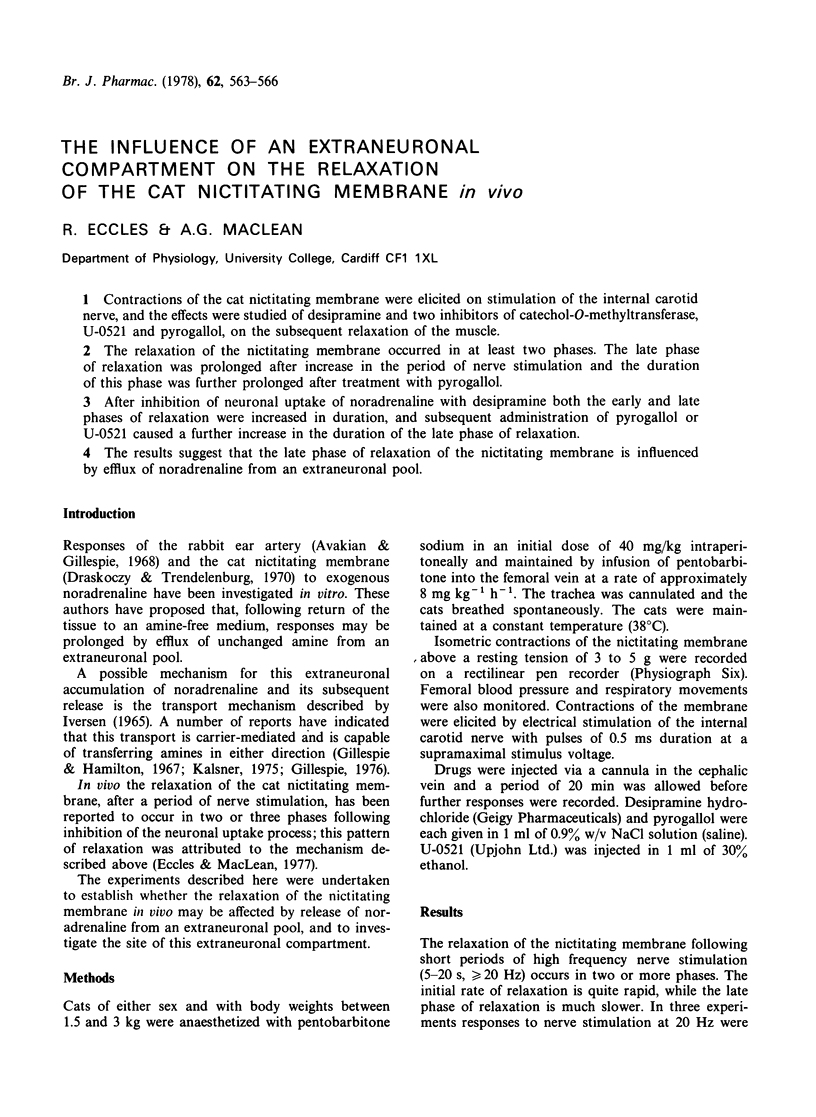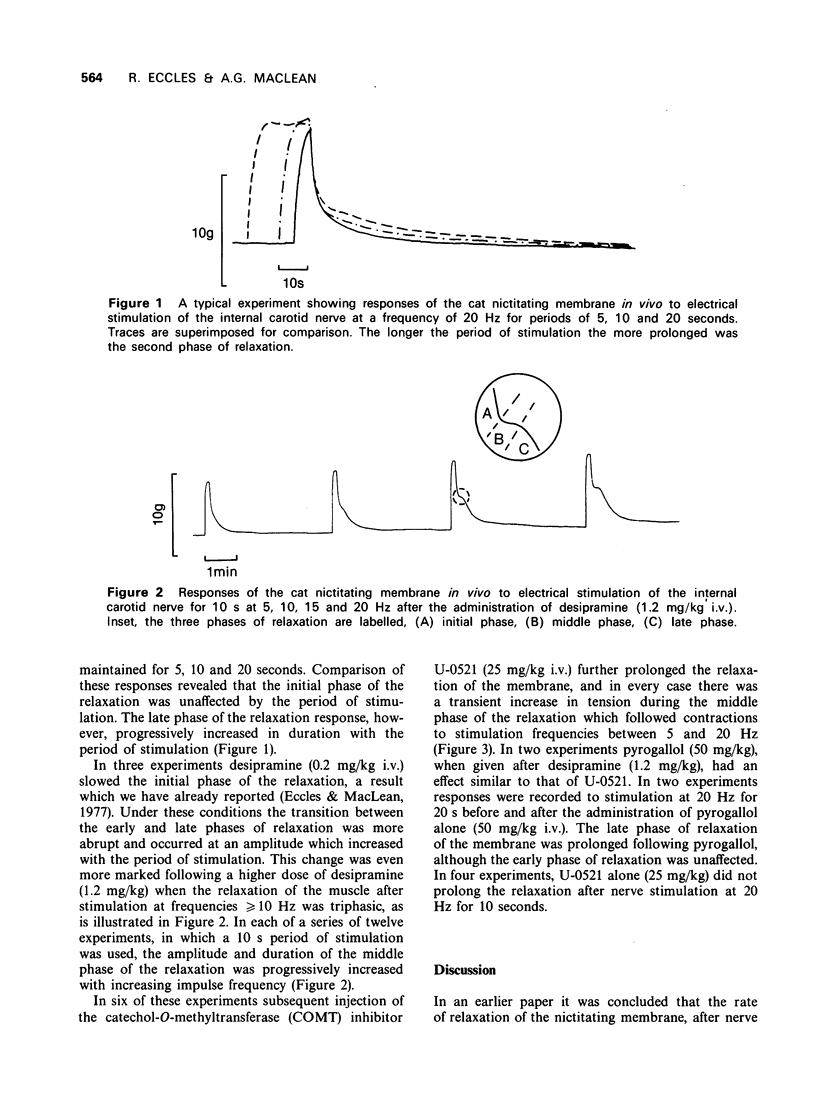Abstract
1 Contractions of the cat nictitating membrane were elicited on stimulation of the internal carotid nerve, and the effects were studied of desipramine and two inhibitors of catechol-O-methyltransferase, U-0521 and pyrogallol, on the subsequent relaxation of the muscle. 2 The relaxation of the nictitating membrane occurred in at least two phases. The late phase of relaxation was prolonged after increase in the period of nerve stimulation and the duration of this phase was further prolonged after treatment with pyrogallol. 3 After inhibition of neuronal uptake of noradrenaline with desipramine both the early and late phases of relaxation were increased in duration, and subsequent administration of pyrogallol or U-0521 caused a further increase in the duration of the late phase of relaxation. 4 The results suggest that the late phase of relaxation of the nictitating membrane is influenced by efflux of noradrenaline from an extraneuronal pool.
Full text
PDF



Selected References
These references are in PubMed. This may not be the complete list of references from this article.
- Avakian O. V., Gillespie J. S. Uptake of noradrenaline by adrenergic nerves, smooth muscle and connective tissue in isolated perfused arteries and its correlation with the vasoconstrictor response. Br J Pharmacol Chemother. 1968 Jan;32(1):168–184. doi: 10.1111/j.1476-5381.1968.tb00441.x. [DOI] [PMC free article] [PubMed] [Google Scholar]
- Draskóczy P. R., Trendelenburg U. Intraneuronal and extraneuronal accumulation of sympathomimetic amines in the isolated nictitating membrane of the cat. J Pharmacol Exp Ther. 1970 Aug;174(2):290–306. [PubMed] [Google Scholar]
- Eccles R., MacLean A. G. Relaxation of smooth muscle following contraction elicited by sympathetic nerve stimulation in vivo. Br J Pharmacol. 1977 Dec;61(4):551–558. doi: 10.1111/j.1476-5381.1977.tb07547.x. [DOI] [PMC free article] [PubMed] [Google Scholar]
- Giles R. E., Miller J. W. The catechol-O-methyl transferase activity and endogenous catecholamine content of various tissues in the rat and the effect of administration of U-0521 (3',4'-dihydroxy-2-methyl propiophenone). J Pharmacol Exp Ther. 1967 Nov;158(2):189–194. [PubMed] [Google Scholar]
- Jarrott B., Langer S. Z. Changes in monoamine oxidase and catechol-0-methyl transferase activities after denervation of the nictitating membrane of the cat. J Physiol. 1971 Jan;212(2):549–559. doi: 10.1113/jphysiol.1971.sp009341. [DOI] [PMC free article] [PubMed] [Google Scholar]
- Kalsner S. Role of extraneuronal mechanisms in the termination of contractile responses to amines in vascular tissue. Br J Pharmacol. 1975 Feb;53(2):267–277. doi: 10.1111/j.1476-5381.1975.tb07358.x. [DOI] [PMC free article] [PubMed] [Google Scholar]
- Trendelenburg U. Supersensitivity of the isolated nictitating membrane of the cat to sympathomimetic amines after impairment of the intraneuronal mechanisms of inactivation. Naunyn Schmiedebergs Arch Pharmakol. 1971;271(1):29–58. [PubMed] [Google Scholar]
- WYLIE D. W., ARCHER S., ARNOLD A. Augmentation of pharmacological properties of catecholamines by O-methyl transferase inhibitors. J Pharmacol Exp Ther. 1960 Nov;130:239–244. [PubMed] [Google Scholar]


